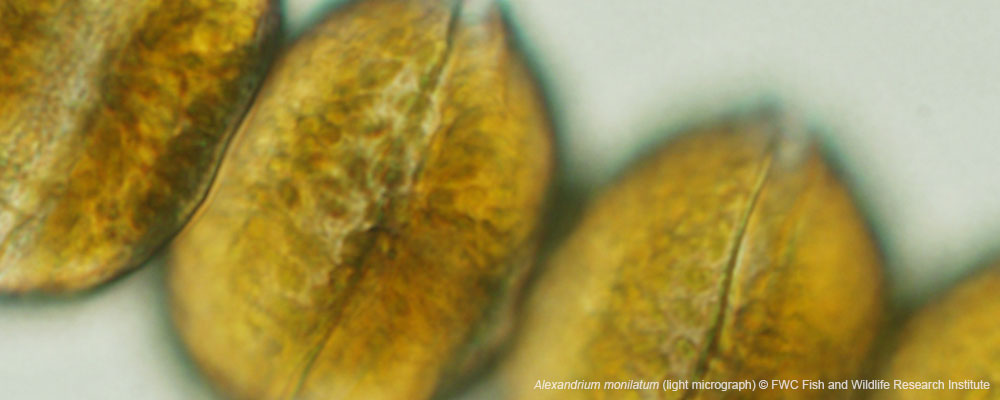
Research of Harmful Algae
Dinoflagellates are important members of the plankton (and less often, the benthos) of freshwater, brackish, and marine waters (~90% are brackish and marine). They are the dominant primary producers of the tropical and subtropical oceans (also abundant in late spring/summer plankton of temperate and subarctic seas), but heterotrophy and symbiosis are highly developed as well.
Although most are planktonic, benthic species include some of the most ecologically important organisms in the world, such as the “zooxanthellae” species that help to form coral reefs. Most are microscopic, but the largest are about 2 mm in diameter (the largest were known to the ancient Greeks, and some species were formally described by Muller in the late 1700s). While the best known morphs are flagellated, dinoflagellates may also be coccoid, filamentous, palmelloid, or amoeboid.
Among about 3,000 species, only about 70 have toxic strains. The toxins include some of the most potent biotoxins known. Dinoflagellates have been linked to major fish kills in many regions of the world. CAAE researchers are examining factors leading to initiation and development of harmful dinoflagellate blooms, and impacts of these blooms on other aquatic organisms.
During the past decade we have published extensively on the life history, ecology, and impacts of the toxigenic dinoflagellates, Pfiesteria piscicida and P. shumwayae. We are also actively engaged in the study of other toxigenic dinoflagellates such as Karlodinium veneficum, Prorocentrum minimum and Alexandrium monilatum.
